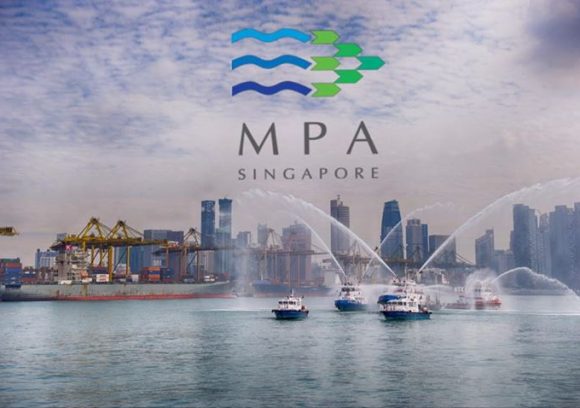
Port of Singapore crosses record 3 billion gross tonnage mark in ship arrivals
SINGAPORE : Christmas came in more ways than one for the Port of Singapore, as it crossed a landmark in terms of ship arrivals on Monday (Dec 25). It registered a record volume of vessels at its terminals in 2023, the Maritime and Port Authority of Singapore (MPA) announced on Tuesday.
The annual vessel arrival tonnage – a measure of the traffic of vessels – at the Port of Singapore for 2023 hit just over 3 billion GT (gross tonnage) in 2023 on Monday, up from 2.83 billion GT in 2022.
Gross tonnage is a way of measuring the size of ships and is the measurement of a ship’s enclosed space, including its engine room and non-cargo spaces, while the annual vessel arrival tonnage refers to the combined internal volume of all vessels that arrived at the port in a year.
The Port of Singapore reached 1 billion GT in 2004 and 2 billion GT in 2011.
Acting Minister for Transport Chee Hong Tat attributed the milestone to Singapore’s strong cooperation between unions, industry and government.
“Other people may try to copy our hardware and infrastructure, they may even try to follow our technologies and operating systems … But many find it difficult to replicate our trusted tripartite ecosystem in Singapore,” he said.
“This is therefore one of the key elements which gives us an edge to stay ahead of the competition, and take Maritime Singapore to even greater heights.”
Mr Chee was speaking at a ceremony on Tuesday where he also gave thanks to the Japanese shipping company Ocean Network Express (ONE). The arrival of its 98,799 GT Singapore-flagged container ship, ONE OLYMPUS, at Pasir Panjang Terminal on Monday enabled Singapore to cross the 3 billion GT milestone.
“ONE’s enduring ties with Singapore will continue to flourish as we recognise its leading qualities as a global maritime centre, strategic logistics hub and home to our global corporate head office,” said ONE CEO Jeremy Nixon.
ROUGH SEAS AHEAD?
Mr Chee, who is also Senior Minister of State for Finance, said the 3 billion GT break-through was extremely significant, given the maritime industry’s downturn in 2016 and supply chain disruptions from the COVID-19 pandemic.
Even as the world emerges from the pandemic, it is now facing slowdowns in production and consumption amid elevated inflation.
More recently, rising geopolitical tensions around the world and military conflicts between Russia and Ukraine and between Israel and Hamas have added to economic uncertainty and instability.
The Israel-Hamas conflict, in particular, has spilled over to the Red Sea, after Iran-backed Houthi rebels in Yemen started targeting ships sailing through the Suez Canal with drones and missiles in what they say is a response to Israel’s war in Gaza.
This prompted shipping giants such as Maersk to reroute ships around Africa via the Cape of Good Hope, resulting in longer sailing times and higher costs.
“(Ministry of Transport) and MPA are carefully monitoring these developments and keeping in close contact with our partners and stakeholders, to see how we can work together to mitigate the disruptions,” said Mr Chee.
Nonetheless, Singapore is continuing to press on with the development of its next-generation container port at Tuas, while also enhancing port efficiency at existing ports, said Mr Chee.
In October this year, MPA implemented the digitalPORT@SG platform for vessels visiting PSA Terminals and Jurong Port for cargo operations. The digital platform shows near real-time data on vessel and port resources, facilitating optimal arrival and departure of vessels to and from the port of Singapore.
“More efficient vessel turn-around times not only reduces carbon emissions due to shorter port stays and better voyage planning, but also allows port users to benefit from cost and time savings,” said Mr Chee, adding that the initiative will be rolled-out to tankers berthing at energy terminals and to all vessels calling at the anchorages in 2024.
“As we have done so for previous challenges, I am confident that our port’s connectivity, efficiency, and reliability will enable Singapore to play a key role of a catch-up port, working closely with the major shipping lines to facilitate the flow of goods around the world.”

